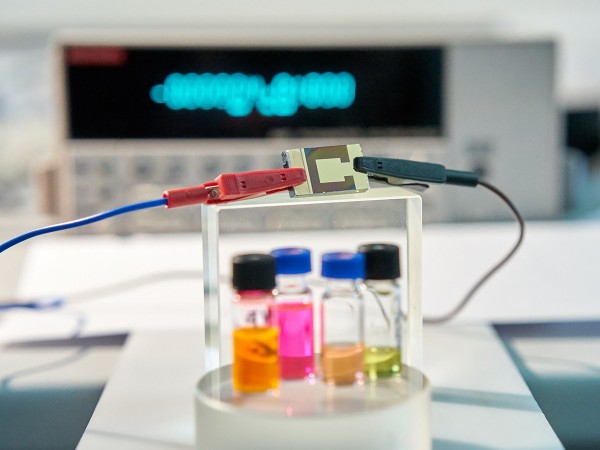
Researchers presented a new road map to create perovskite semiconductors that can be used in solar cells and LEDs. Perovskite could provide many advantages over purely silicon-based semiconductors, specifically due to its fault tolerance in manufacturing.
In a new article published in the journal APL Materials, researchers presented a possible road map to bring this silicon alternative closer to production.
Perovskite is able to provide many benefits over the current silicon panels. While silicon must be grown in an expensive process, perovskite semiconductors can be produced using a much cheaper process while offering tunable functionality.
Silicon-based semiconductors cannot be processed in a solution bath, as that bath is more prone to producing faults in the material:
For many years, solution-processed semiconductors were viewed as unable to deliver the same functionality as specially grown crystalline semiconductors. The reason behind this thinking was that simple solution processing will inherently lead to a relative high number of defects within the formed crystal structure, which can negatively affect its functionality.
Lukas Schmidt-Mende, coauthor from the University of Konstanz, Germany
The hybrid design of the perovskite, however, makes it very fault-tolerant. This allows it to be processed from a solution, using a semiconductor ink coating to create the desired product, whether a solar cell or LED.
This process also allows the semiconductors to be tuned to a specific purpose. So perovskite LEDs can be controlled for a specific wavelength of light, while solar cells can have their absorption profile optimized.
While perovskite may provide more efficient panels, the researchers also point out the major drawbacks to the material that need to be addressed before any perovskite panels would be suitable for true solar installations.

Those drawbacks come with the use of heavy metals, primarily lead, as well as the much shorter lifespan of the perovskite panels compared to current silicon offerings.
Other researchers remain focused on addressing these concerns to bring the more efficient panels to market. In 2019, researchers found a self-healing polymer that can effectively seal in the toxic materials. While avoiding the use of lead altogether would be preferable, this sealing could be help minimize negative impacts while bringing a potentially superior material to market.
Earlier this year, researchers at Brown University found a way to improve the long-term reliability of perovskite solar cells. By using a layer that has a silicon atom on one side and an iodine atom on the other, the researchers were able to improve the overall efficiency as well as the long-term reliability. Admittedly, though, the reliability and lifetime of these panels are still far behind standard silicon offerings. They estimated that the panel’s 80% efficiency life would be just 4,000 hours. Even lower-quality solar panels degrade at roughly 0.8% per year, meaning it takes more than 20 years to fall to 80% efficiency.
While perovskite clearly has a long way to go before it is totally ready for the mainstream, each improvement is a promising step toward a more efficient future.
Subscribe to Electrek on YouTube for exclusive videos and subscribe to the podcast.
Author: Derek Wise
Source: Electrek



